What Does Egyptian Art Have Heavily in Its Subject Matter?
When y'all think of ancient Egyptian art, what most likely comes to mind is the Great Sphinx of Giza or the Pyramids and while Egyptian architecture and statues are certainly very impressive, they are only a small office of a very intricate yet specific creative civilization. The Egyptians loved to paint, to draw and to carve, using mineral pigments to create brilliant reds, golds, greens, blues and black. They were usually then coated with a varnish which has enabled many items to last remarkably well.
The style is very distinctive, generally based around pharaohs, sphinxes and the many Egyptian gods. Always intended to be functional rather than beautiful, artistic creations served as homes for spirits and gods; gifts to the afterlife; or to appease a pharaoh, and the theme of balance was prevalent throughout. The history of their art is almost every bit old as that of the Ancient Egyptian civilisation itself and changed very piffling over the 3000 years that the society reigned over the river Nile. Perhaps that is why information technology is very easy for fifty-fifty the untrained eye to find a piece of work of fine art from the fourth dimension.
Identifying Egyptian Fine art

The earliest Egyptian art can be hands identified by the images of the people in their paintings. These depictions are sized depending on condition, with gods and pharaohs beingness painted much larger than the average person, who in plow will be bigger than their slaves who were considered to exist the lowest form of human life. Animals, copse and inanimate objects were also kept pocket-sized and less meaning.
Most striking, perhaps, is the ways these people are represented, with their bodies ever facing the onlooker and their heads looking to the side. Men are shaded darker than women and when standing, the people ever take their legs parted. In that location was no sense of perspective in whatsoever of their creations, then that everything seemed very ii-dimensional.
Monuments
Pharaohs would often commission large statues that would crave a large squad of artists to piece of work together to create. Perhaps the most famous example of this is the Cracking Sphinx of Giza, which would have taken around three years to complete. The sphinx is a mythical Egyptian creation that had the trunk of a lion and a human caput. When depicted in art, these creatures would usually wear a headdress similar to those the pharaohs wore.
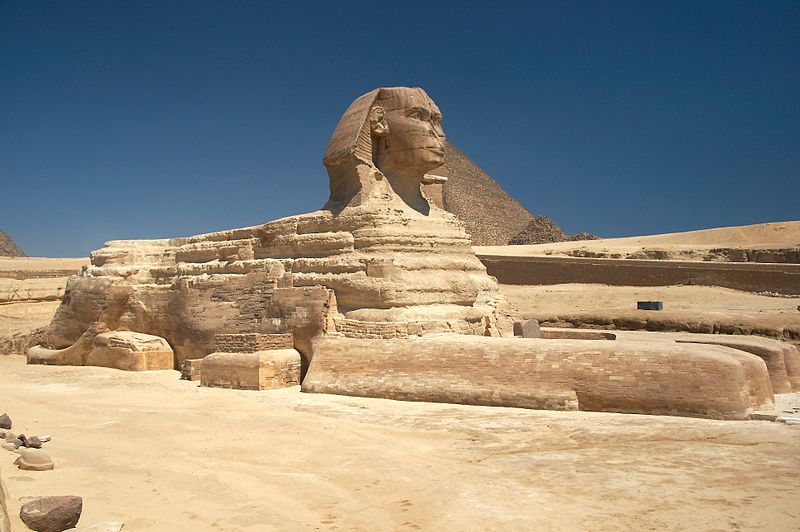
The giant statue was carved out of limestone and historians have dated it around 2500BC, although this has been highly contested by many and few concord on who congenital information technology and why. Although the statue today looks fairly monotone in colour, pigment residue suggests information technology would have been painted when it was congenital, making for a far more spectacular sight.
Sphinxes became more pop in Egyptian art during the reign of Thutmose. Legend has it that, as a young prince, Thutmose once fell comatose in the shadow of the Neat Sphinx and had a dream. In information technology, the Sphinx spoke to him and told him to clear the sand around the base of the statue in club to become the next king. When he was finally crowned, he regularly commissioned works to include his favourite mythical animate being. There is also a plaque in front end of the Sphinx that tells this story.
Bas-Relief
A very common feature in statues and carvings, bas-relief (pronounced bah ree-leef) is a term for when the carved figures are raised from their background. The Egyptians liked to add together their bas-relief designs to the side of existing stone buildings, giving them a distinct and unique expect.
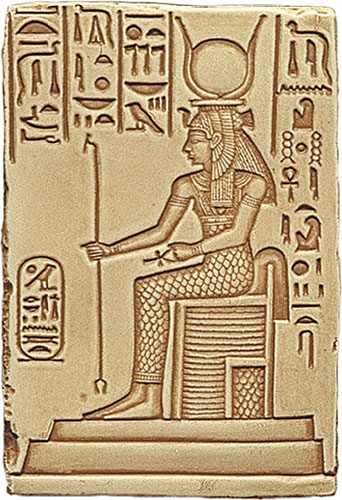
While bas-relief can be created through simply etching away at a wall, the Egyptians were more dedicated to perfection. They would use a thin layer of plaster to the side of a building and so polish information technology until perfectly smooth. Ane of the team of artists would and so marker the plastered area with a cherry cross pattern which would brand it easier to continue the correct proportion of the figures. They would have an image on a piece of papyrus that would have been fatigued by the lead artist and this would be copied exactly onto the wall. The sculptor would and then come up forth and carve the image using a wooden mallet and copper chisel. Paint was and so used to farther accentuate the creation.
Hieroglyphics
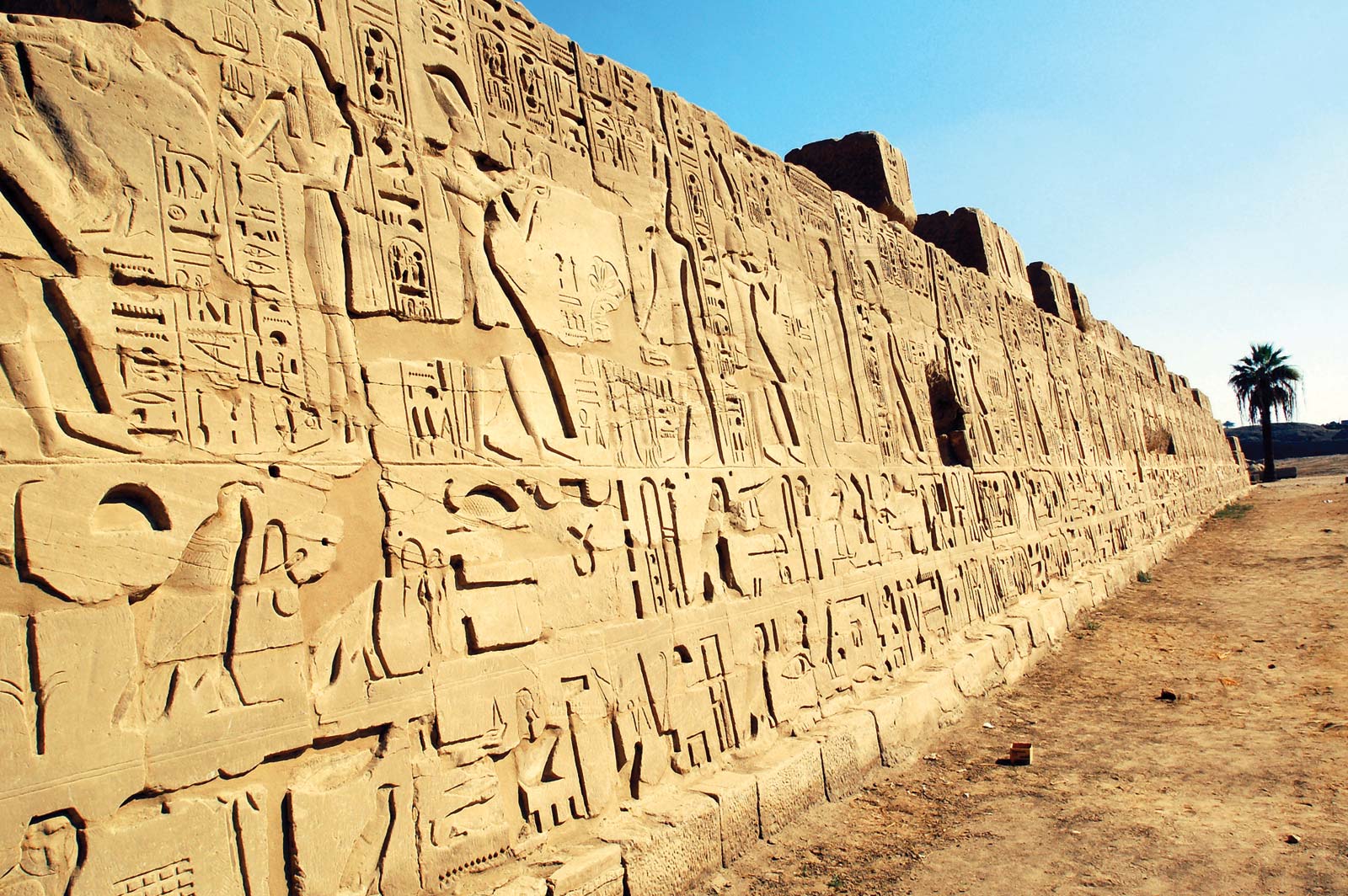
As much an creative expression as a manner of communicating, the word 'hieroglyphics' literally ways 'holy writings' and were used as a way to help people remember the names of the various pharaohs. There was a symbolic alphabet of sorts, but since their linguistic communication is so dissimilar to ours, it is very hard to lucifer the hieroglyphs to the English alphabet. Symbols would usually stand for certain sounds, but also, sometimes they were a representation of the figure or item.
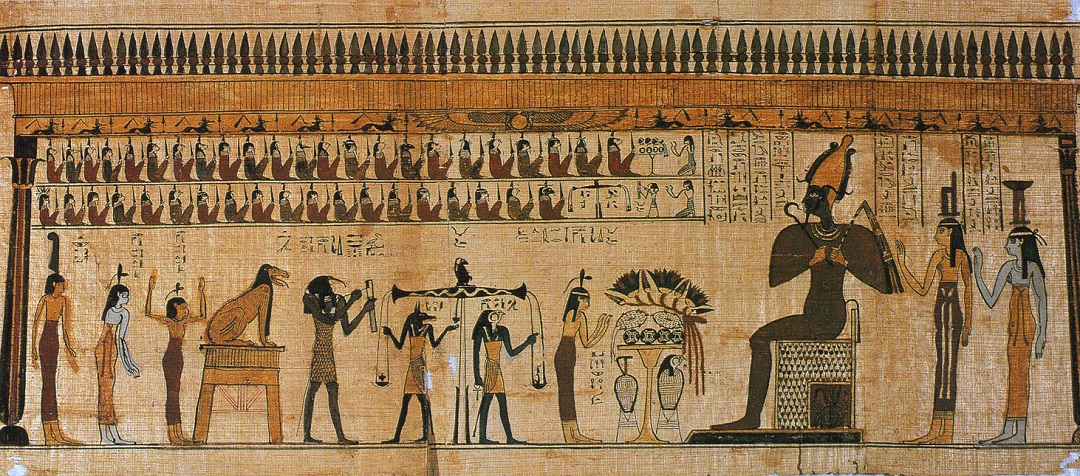
Hieroglyphs were non used for day-to-day communication but were instead considered to be a gift from the god, reserved for fine art works ordered by the pharaoh in order to carry some sort of magical power. 1 famous example of this is the Egyptian Book of the Dead, a scroll fabricated to protect certain wealthy figures in the afterlife. In that location were a number of them made, many of which would unroll to around 17-feet long. They were painted with hieroglyphs to represent magic spells that were intended to protect them, as well as images from their home and people that they loved, in order to bring them comfort, and then buried with them when they died.
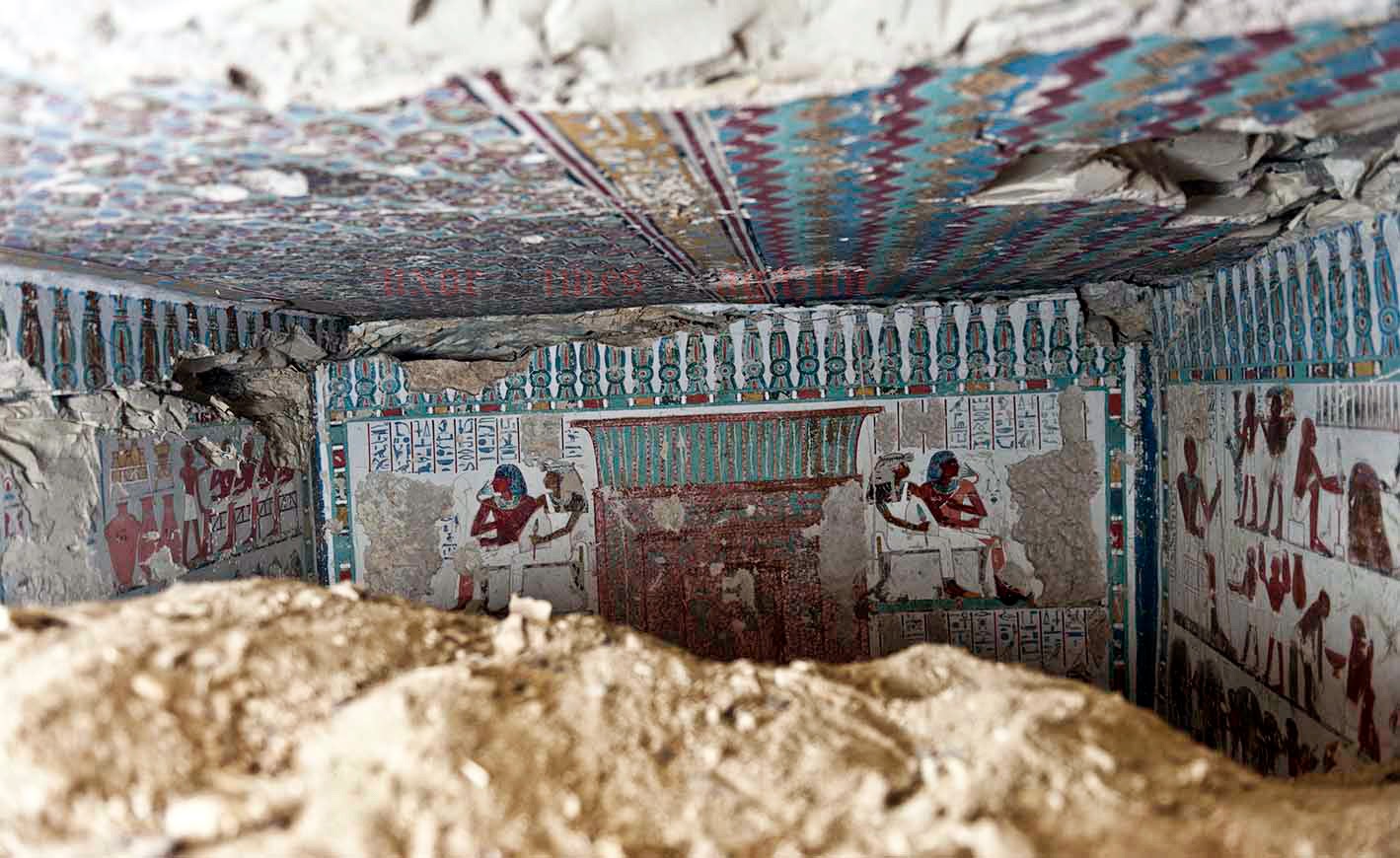
Those rich and powerful plenty to accept a tomb prepared for their body would also take had information technology decorated with hundreds of paintings. These were never intended to exist seen by outsiders but were carved as a marking of respect for the dead body inside. They would often correspond the deceased passing into the next life, or the happy times they hoped they would have in their decease, accompanied past beautiful hieroglyphic markings. They would also often exit small sculptures of 'gifts' they wanted their loved one to take with them into the afterlife.
Amarna Art
A unique grade of art that became prominent in the eighteenth dynasty. Gone were the traditional categorical bodies of previous paintings – instead men were depicted with more feminine features including large breasts and lips. These images had a more than fluid sense of movement in them that went confronting the years of creative structured convention.
This alter came about with the reign of a new king – Akhenaten. A huge devotee to Aten, the God representing a sun disk, his new stylised course of art came as part of a new religious cult ready upwardly in order to laurels this deity. Aten was different to other gods of the fourth dimension in that it had no human being grade but it shortly became the official state god. Even compages of the time was dissimilar to buildings of the by, in that they had a more open fashion to them, in order to let the sun in.
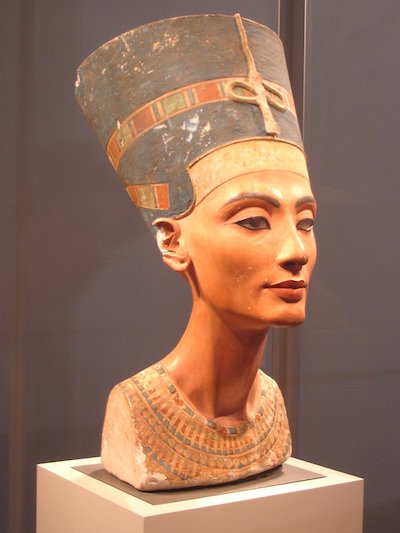
During his reign, Akhenaten married Nefertiti and she features in many of the art pieces of the time. The Bust of Nefertiti is ane of the most famous, painted with stucco materials. She is thought to have been an extremely beautiful woman, since statues and paintings at this fourth dimension were created to be realistic rather than idealistic. In dissimilarity, Akhenaten is usually shown as having overly large lips, a long mentum and a large head. Some other famous painting from the time is of 2 of their daughters, Neferneferuaten Tasherit and Neferneferure, both with a more fluid, less structured form.
After Akhenaten's death, Egyptian fine art returned to its conservative, strict traditional style, with many works of art and architecture of this time existence destroyed and the old king's proper name stricken from official records.
Modern-Mean solar day Art
Egyptians have ever expressed their creative creativity through carvings and paintings on walls and the citizens today are no different. Modern art is a response to the toppling of the government in 2011, with graffiti-like images splashed across Cairo showing the feelings of the people. While virtually street art is chop-chop painted over, as if it never existed, there are a few artists who have fabricated their proper name in this style. Names to look out for include Alaa Awad, Hazem Taha Hussein and Hossam Dirar.
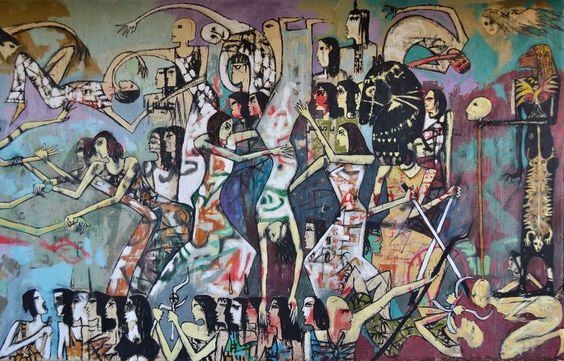
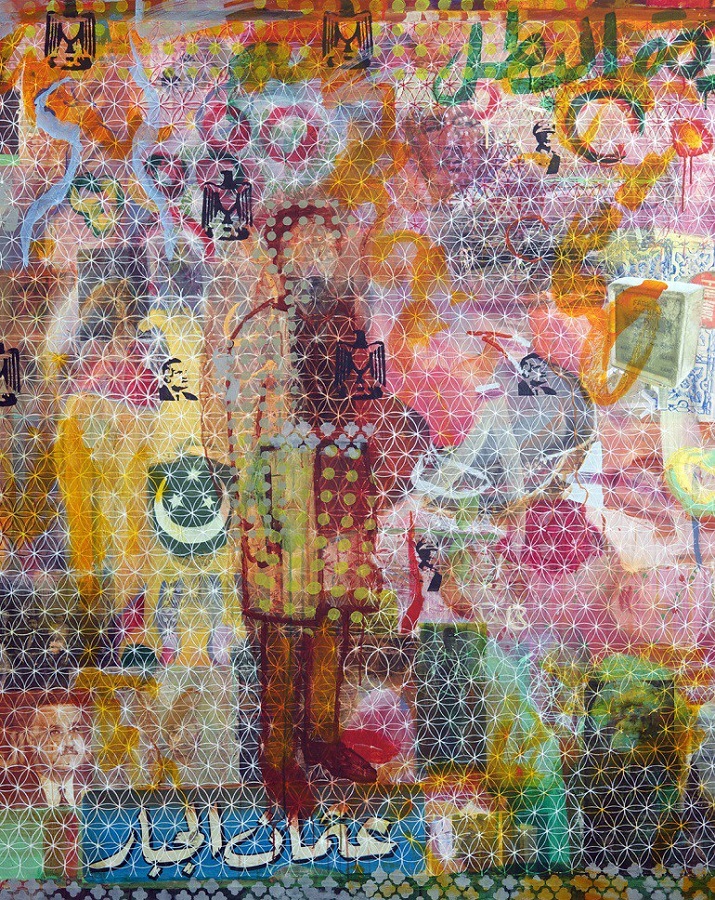
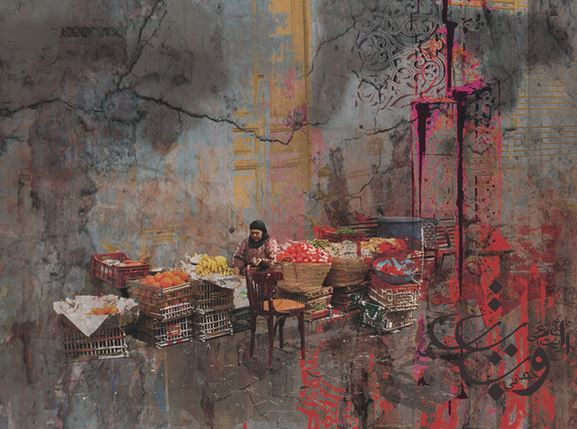
Images are now freer with fewer restrictions, but in the instance of Awad and Hussein, at that place is nonetheless an chemical element of tradition running through their wall murals, with that familiar Egyptian pose and repetitive nature. The difference now, however, is that many artists have a political agenda attached to their piece of work. It is no longer deputed by the king, only instead features the artists' own ideologies and thoughts.
Sources
- https://en.wikipedia.org/wiki/Art_of_ancient_Egypt
- https://world wide web.ancient.eu/Narmer_Palette/
- http://www.ancientegyptianfacts.com/ancient-egyptian-carvings.html
- https://www.ancientegyptonline.co.u.k./amarnaart.html
- https://www.historylists.org/art/ten-most-distinguished-works-of-aboriginal-egyptian-art.html
- https://www.ancient.eu/The_Great_Sphinx_of_Giza/
- https://www.ducksters.com/history/art/ancient_egyptian_art.php
- https://www.ancient.eu/commodity/1077/a-brief-history-of-egyptian-fine art/
- https://earthnworld.com/ten-most-famous-monuments-of-ancient-arab republic of egypt/
- https://discoveringegypt.com/egyptian-hieroglyphic-writing/
- https://www.britannica.com/topic/hieroglyphic-writing/images-videos/media/265021/119992
- https://world wide web.britannica.com/topic/hieroglyphic-writing/images-videos/media/265021/162627
- http://luxortimesmagazine.blogspot.com/2015/03/arce-unearth-18th-dynasty-tomb-in-qurna.html
- https://www.ancientegyptonline.co.uk/nefertitibust.html
- http://artcentron.com/2014/08/02/abstruse-figures-behind-islamic-patterns/
burrowsgragairehe1972.blogspot.com
Source: https://www.artsupplies.co.uk/blog/the-evolution-of-egyptian-art/
Post a Comment for "What Does Egyptian Art Have Heavily in Its Subject Matter?"